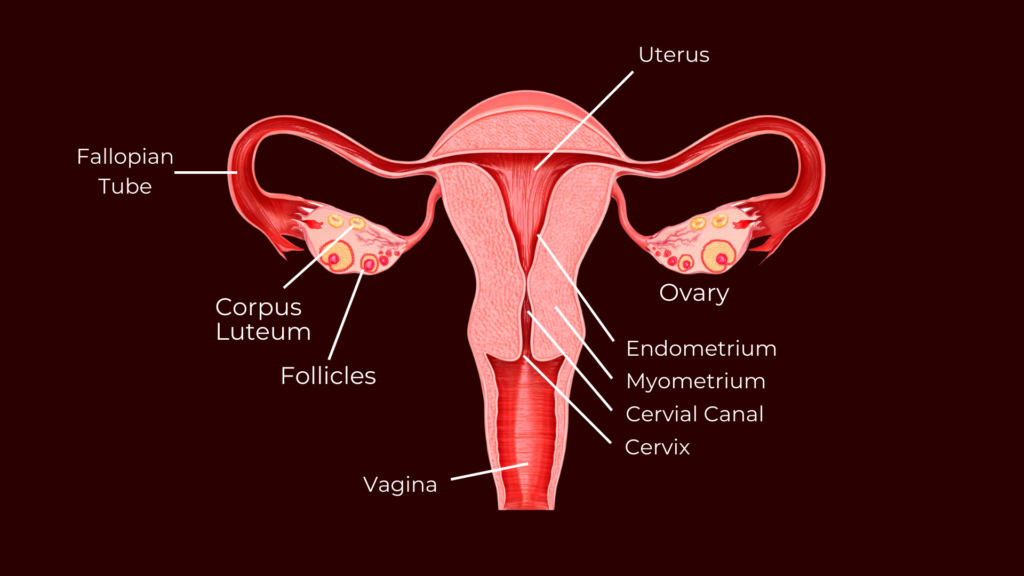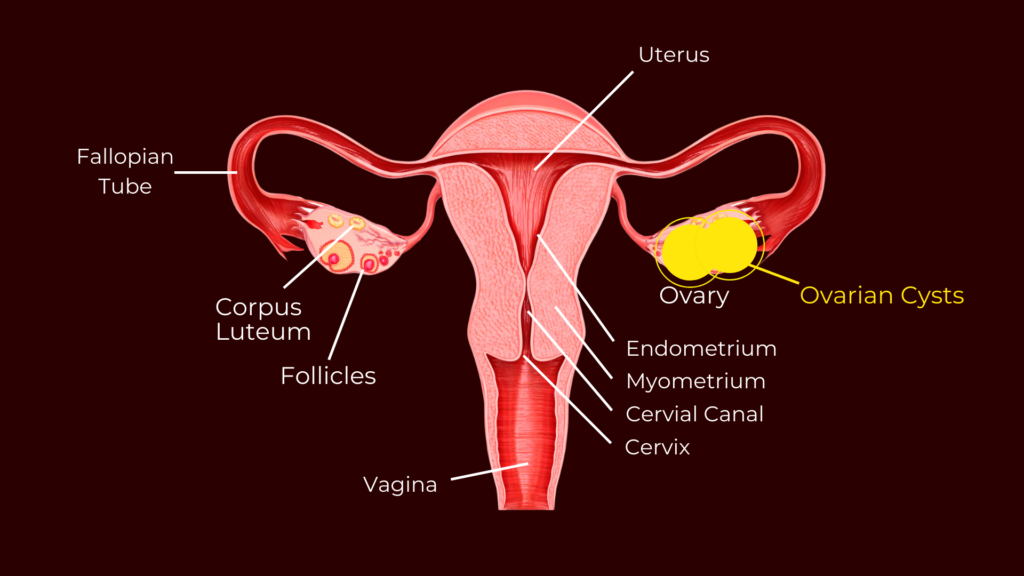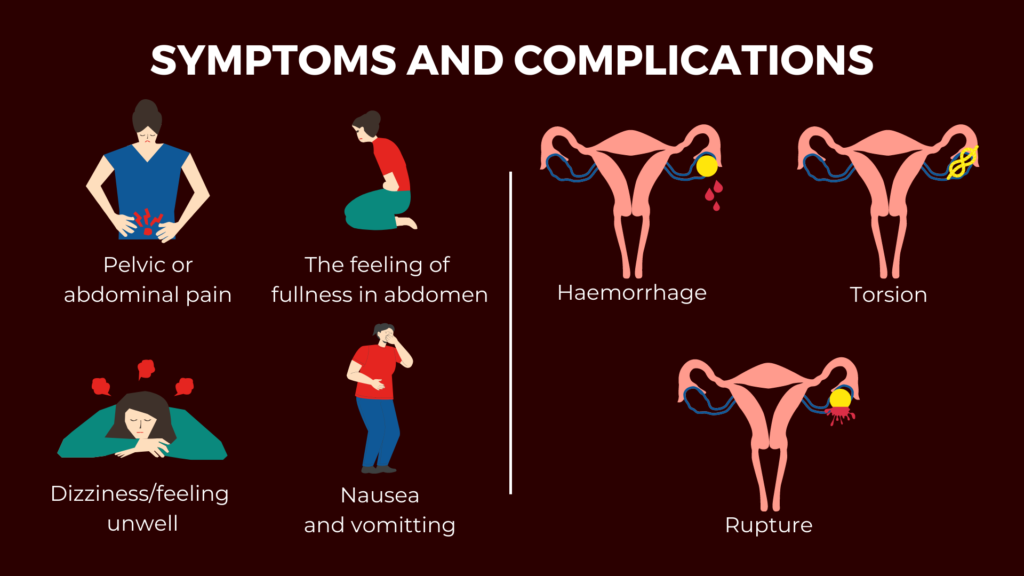Ovarian Cysts: the two words sound scary, don’t they? Ovarian Cysts aren’t always as terrifying as they sound, most are common and harmless. However, much like Mrs. Alice, you’ll find out today that this isn’t always the case.
Mrs. Alice stumbled into the Accident and Emergency Unit of the hospital, experiencing severe and unbearable abdominal pain and discomfort, so much so that she was unable to have a peaceful night’s rest. She thought it was just a simple stomach ache or maybe it was gas from reflux, but little did she know her abdominal pain would become a medical emergency…
After many diagnostic examinations and assessments, the doctor found that she had bleeding in her stomach and abdomen. She was immediately resuscitated (with blood & fluids) and brought into the surgical ICU. This is where they found the culprit, a nasty ruptured Ovarian Cyst. Mrs. Alice was rushed to the operating theatre, where she was saved thanks to the Surgeon’s expert hands.
But how did Mrs. Alice’s little “stomach ache”, a so-called harmless Ovarian Cyst, turn into a medical emergency?
Let’s find out.
Table of Contents
Ovarian cysts; dangerous or harmless?
Ovarian cysts are sacs filled with fluid, usually found in one or both ovaries or on the surface of the ovary. They are very common and found among many women of their reproductive age. Most cause little-to-no discomfort or pain and can resolve naturally without any treatment.
Among 20% of women develop at least one ovarian cyst mass in their lifetime, however, most go unnoticed as they do not cause incredible pain. While ovarian cysts are common among women of their reproductive age, post-menopausal women also experience cysts including Graafian follicles, most of which are benign (non-cancerous). In most women, ovarian cysts are functional and benign, requiring no surgical treatment or medication. However, ovarian cysts also have the capability of growing, causing a range of painful symptoms and complications and some have the potential to become cancerous as well.

Causes and Types of Cysts
There are different types of cysts, some may form from your menstrual cycle, while others have no relation to your menstrual cycle whatsoever. To understand how cysts come to be and why they exist, we need to run through the normal pathophysiology of the menstrual cycle.
Phase I – The Follicular Phase
The menstrual cycle begins at the follicular phase. This is when small ovarian follicles are produced in the ovaries with the help of the Follicle-Stimulating Hormone (FSH). Dominant follicles step forward, one of these follicles destined to be ovulated in the next cycle, ready to be released from the ovary and into the Fallopian Tube. Normally, follicles produce hormones estrogen henceforth increasing the production of Luteinizing Hormone (LH) responsible for ovulation. Due to the sudden “LH Surge” (increase in LH), the mature follicle breaks open and releases the oocyte (the egg) into the Fallopian Tube.
Phase II- The Luteal Phase
After ovulation, LH stimulates the increase in hormone progesterone production which remains the dominant hormone in this phase. With the help of LH, the Corpus Luteum (a bunch of cells formed in the ovary) releases progesterone and maintains this release of progesterone to prepare the uterus for a baby. The endometrium prepares itself by thickening the uterus lining for the possible implantation of a fertilized egg.
If pregnancy occurs, the fertilized ovum is implanted into the already-prepared endometrium and the corpus luteum remains as a means of support. However, if no pregnancy takes place, this is when a period takes place. The corpus luteum regresses and the endometrium walls degrade and break down to form periods. To break down this strong endometrium lining, the surrounding muscles contract and squeeze leading to painful cramping, aches, and many more period symptoms.

Cysts can form anywhere in this process. The common types are Functional Cysts. These divide further into Follicular and Corpus Luteal Cysts.
Follicular cysts form when the follicle fails to break during ovulation and the cyst grows becoming enlarged, some growing larger than 2.5 cm (diameter). Likewise, if the corpus luteum does not regress, cysts can develop and grow up to 3cms forming corpus luteal cysts. Both these cysts have the potential to grow and rupture. However, it is important to note that while cysts burst and rupture, this might not always be considered a medical emergency.
We need to begin to worry when other ovarian cysts called pathologic cysts, grow and rupture:
- Dermoid cysts: (teratomas) contains tissues, hair skin teeth, and rarely cancerous
- Cystadenomas: grow on the ovary surface and are filled with mucous material
- Endometriomas: uterine endometrial cells grow OUTSIDE the uterus (endometriosis), some tissue attaches to the ovary forming a growth.
- Polycystic Ovary Syndrome (PCOS): when enlarged ovaries contain many small follicular cysts.
While these cysts are mostly benign, they have the potential to turn malignant (cancerous), to grow and rupture causing adverse effects.
Additionally, a cyst can cause OVARIAN TORSION when it becomes too enlarged causing the ovary to move, leading to painful twisting. This in turn causes severe pain and vomiting. This is dangerous because it can also reduce the blood flow to your ovaries.
But what causes a cyst to burst open? The larger the cyst, the higher chance it has of rupture leading to internal bleeding. Sexual activity or intense exercise can also cause a cyst to burst.
Signs and Symptoms
If you experience a ruptured cyst, the pain may vary depending on the cyst and the severity of the situation. Common symptoms include:
- Pelvic pain (Mrs. Alice describes this as stomach/abdominal pain)
- The feeling of fullness in your abdomen
- The need to frequently urinate
- Nausea or vomiting
- Fever in some cases involves an infection of an ovarian cyst
- Dizziness can indicate bleeding in your stomach.
Other symptoms of internal bleeding can include vision changes or increased heartbeat.
Complications of a ruptured ovarian cyst
An ovarian cyst may cause complications;
- Rupture
- Hemorrhage
- Torsion
Hemorrhagic ovarian cysts develop when the cyst swells up with fluid and begins to bleed while Ovarian Torsion is defined as twisting of the ovarian vessels which leads to insufficient blood flow to the ovary.
Rupturing of ovarian cysts may be dangerous as it leads to internal bleeding within the organs. This blood loss from the arteries results in less blood flowing to the organs, depriving the organs of oxygen and nutrients. This can also lead to a decrease in blood pressure as now we see that there are fewer components of blood in the bloodstream and more of it outpouring into the interstitial fluid (the space between arteries and veins). Therefore, a sudden drop in blood pressure could lead to cardiac arrest which would have been the case for Mrs. Alice. These complications require immediate care.
These symptoms are shown through signs such as dizziness or light-headedness which is why it’s always important to take note of your symptoms as this is your body’s way of trying to alert you that something may be wrong.

The Diagnosis Process
After a medical history checkup, your doctor will most likely check whether you are pre or post-menopausal and conduct a physical pelvic examination as this helps detect cysts. However, for further confirmation and to rule out other causes of your symptoms (such as Kidney Stones), more tests may be conducted.
These tests include:
- Pregnancy Test to check if this is could be the cause of the cyst
- Blood tests to check for low iron (Anaemia), infections (through white blood cells), and signs of cancer (using CA 125 blood test)
- Urinalysis to rule out urinary tract infections, or kidney stones
- Ultrasound using sound waves to image the size, shape, and location of the cyst
Treatment and Management of Cysts
Many methods of treatment and management are available but the course taken depends on the age of the patient, size and severity of the cyst, and the menopausal status of the patient.
Smaller cysts that cause no pain or symptoms will resolve naturally. Doctors may want to monitor you in case the situation shifts and this is called “Watchful waiting”. Through scans and blood tests, doctors can monitor the resolution of your cyst and monitor your recovery. If the cyst resolves itself without medication, then most likely it is a functional cyst, the ones that just come and go.
However, if the cyst doesn’t resolve itself after a few menstrual cycles, then a further follow-up is required. Most pregnancy-related cysts tend to resolve by themselves 14 to 16 weeks after gestation. Simple cases of ruptured ovarian cysts can be treated at home through pain medication.
Surgery is recommended for patients with ovarian torsion, acute or chronic pain, internal bleeding, or if the doctor suspects malignancy as these cysts have the potential to turn cancerous as well. Mrs. Alice experienced sudden internal bleeding because of her ruptured cyst, causing her to go into cardiac arrest and so the course of treatment differs for each patient and their condition. As discussed before, there are many conditions and causes for the development of ovarian cysts and therefore, there are different treatment procedures for endometriosis or PCOS.
Most treatment aims to avoid removal of ovarian tissues or removal of the ovary as a whole through quick and minimally-invasive treatments such as Laparotomy or Laparoscopic surgeries.
Laparoscopic Surgery
For cases including ruptured cysts, laparoscopic surgery is ideal.
Laparoscopic surgery is a type of keyhole surgery where the surgeon makes small incisions (cuts) on your abdomen to access the site of surgery. A laparoscope (a small tube-like microscope with a light at the other end) travels through your abdomen allowing the surgeon to view your organs on a screen at the operating theatre. The cyst is removed through small cuts in your skin and the cuts are closed after the surgery.
Many patients and doctors alike prefer laparoscopic surgery as it is less painful (than conventional open surgery) and patients can recover much faster with fewer hospital visits and checkups. Mrs. Alice was able to return home to her family 3 days after her surgery.
Surgical procedures aim to preserve as much of your ovaries as possible. With medical advances such as laparoscopy or laparotomy, they ensure your fertility remains unaffected. In some cases, 1 ovary may be required to be removed and the remaining ovary will be able to release hormones and eggs as normal.
Laparotomy, on the other hand, consists of larger cuts being made to provide the surgeon with better access to the cyst and site of surgery. The whole cyst or even the ovary may have to be removed if the cyst is cancerous and sent to a laboratory for further testing. Then the incisions are stitched shut.
Both laparoscopy and laparotomy require local or general anesthesia so the patient feels no pain and can recover quickly after the surgery.
Post-surgery
After surgery, careful recovery is crucial. While laparoscopic surgery ensures quick and safe recovery, checkups and management after surgery are vital.
Doctors will look out for post-surgical complications such as heavy bleeding, severe pain in your abdomen, fevers, or dark vaginal discharge to check for any infections.
Other complications of surgery may include:
– Blood clots
– Cysts returning after it’s been removed
– Pain or burning sensation while urinating
– Blood in urine
– Swelling or redness in your legs
All of which should be reported to your doctor immediately.
Conclusion
Ovarian cysts are generally common and nothing to be concerned about. Most come and go as the body develops and changes with each menstrual cycle however symptoms such as severe pain in your abdomen, dizziness, or fever are some pointers to take note of. There are many causes and types of ovarian cysts, the harmless ones being functional cysts and others that have the potential to cause harm or even become cancerous.
Early diagnosis ensures that you receive the correct treatment early before the condition becomes severe. Ruptured ovarian cysts can cause severe harm to the body leading to internal bleeding and even cardiac arrest in some severe cases. However, through modern technology, equipment, and surgical treatment such as laparoscopy, patients can recover swiftly and safely.
